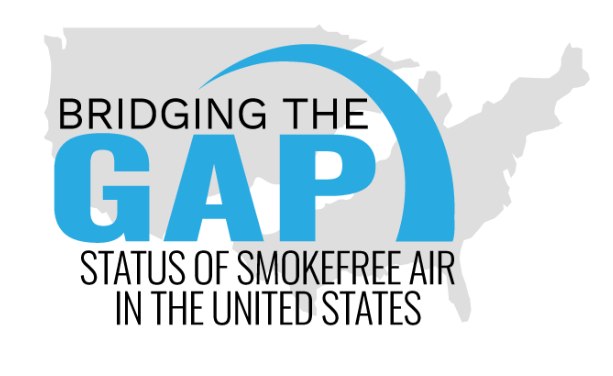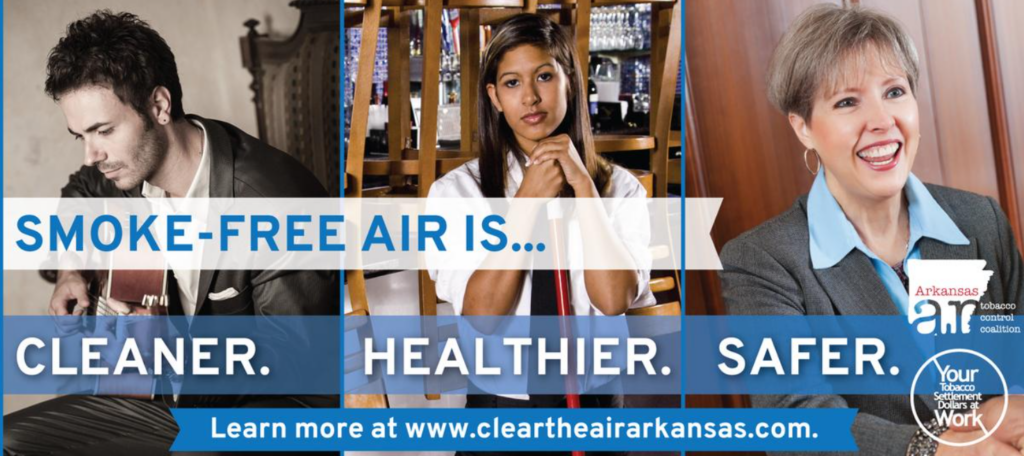99.5% of the population is not protected from secondhand smoke in workplaces.
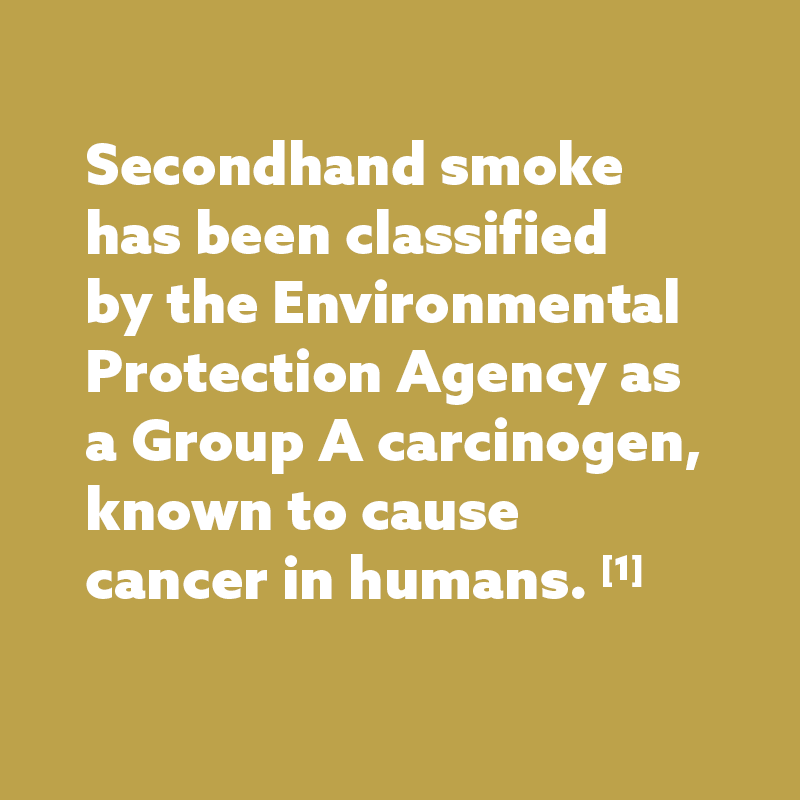
The vast majority of Arkansas’s 3.018 million residents are not protected by a 100% smokefree workplace, restaurant, and bar law. A weak state law adopted in 2007 prohibits smoking in workplaces (except those not open to the public and with two or fewer employees), in restaurants and bars (except those that prohibit persons under 21 from entering the premises), and in public places generally. This exemption-riddled law leaves thousands of workers and patrons exposed to secondhand smoke.
- 62.3% of Americans enjoy comprehensive smokefree protections in all public places and workplaces, including restaurants and bars. In contrast, in Arkansas only 0.5% of the population is protected by this type of smokefree law. [2]
- Arkansas is 1 of 10 “Most Challenged” states based on health outcomes according to the United Health Foundation’s “America’s Health Rankings Annual Report,” ranking 48th out of 50 states for overall health and 40th for Non-smoking Regulations. [3]
- Only 3 of 502 incorporated municipalities have a 100% smokefree workplace, restaurant, and bar law, covering a mere 0.5% of the state’s population.
- In Arkansas, the smoking rate among adults is 20.5%, and 13.7% for high school students, compared to national rates of 12.5% and 4%, respectively. [4]
Preemption Status:
Not Preempted
State law does not preempt local governments from adopting smokefree air laws. Preemption refers to situations in which a law passed by a higher level of government takes precedence over a law passed by a lower one. In such cases, preemptive state laws set a ceiling, rather than a floor, and do not allow local authorities to enact strong local laws.
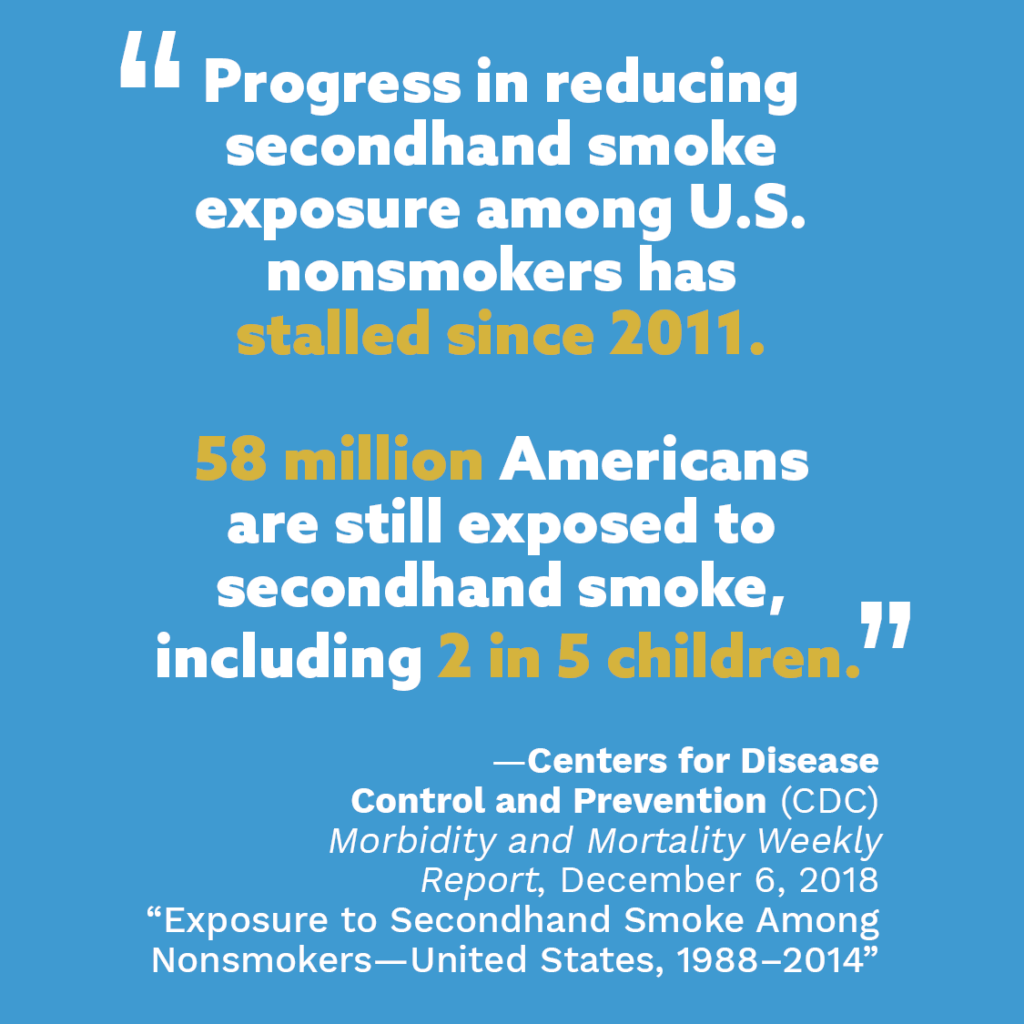
Current Landscape of Smokefree Protections
100% Smokefree Workplace, Restaurant, and Bar Laws, as of December 2022 [2]
Click on any star for city name.
To see additional smokefree laws, visit our list.
There has been good local momentum toward 100% smokefree laws in Arkansas. Highfill was the first to adopt a law with some smokefree provisions in 2003, and Wooster was the most recent to adopt a strong law in 2016. Of the six communities that have adopted smokefree provisions, only three have strong laws which cover all non-hospitality workplaces (offices), restaurants, and bars. There is significant opportunity to reinvigorate the movement and to relaunch efforts that would bring smokefree air to more of Arkansas’s population.

Hospitality Workers are Exposed to Secondhand Smoke
Those most likely to be exposed to secondhand smoke work in the hospitality industry and are more likely to identify as a racial minority.

Almost everyone in food or bar service in Arkansas is exposed to secondhand smoke.
Who is Left Behind
Virtually every citizen in Arkansas is still exposed to secondhand smoke in workplaces, restaurants, and bars. In addition, gaming has expanded in Arkansas and not all facilities are 100% smokefree indoors.
Although some businesses may have voluntarily adopted a smokefree policy, these voluntary policies have little impact on the overall health status of the community or the state, unlike city- or county-wide laws.
Arkansans are falling behind. America’s Health Rankings placed them 48th in 2021, due to a number of challenges in addressing chronic disease and health outcomes. One of the top, core measures negatively impacting health outcomes is the state’s smoking rate. [3] Health disparities within the state persist by income level, geography, education level, and race/ethnicity. The length and quality of life for African Americans is most similar to the least healthy counties in the state. [8]
Beyond secondhand smoke exposure, nonsmokers exposed to thirdhand smoke in a casino are at an ever higher risk than those in a thirdhand smoke-polluted home. [9] Further, hospitality workers and children are susceptible to thirdhand smoke exposure, as the particles cling to hair, clothing and cars. Young children are particularly vulnerable, because they can ingest tobacco residue by putting their hands in their mouths after touching contaminated surfaces. [10]
Smokefree laws provide equal protection to all workers and patrons, and they create a social norm for tobacco-free living.
Poor Health Outcomes and High Costs
Tobacco use is the leading preventable cause of death in the United States. More than 480,000 people die from smoking or exposure to secondhand smoke each year. [5]
Tobacco exacts a high toll in Arkansas, where 5,800 people die each year of tobacco-related illness. Healthcare costs attributed to tobacco use in Arkansas amount to $1.21 billion annually, and the portion covered by Medicaid is $293 million.
Tobacco use remains the leading cause of preventable death and disease, and is a major risk factor for the top four diseases that account for over 59% of all deaths. In addition, smoking costs the state over $1.2 billion in health care expenditures. Those financial costs increase when exposure to secondhand smoke, smokeless tobacco use, cigar and pipe smoking, and smoking-related fires are included. [6]
Secondhand smoke exposure causes heart disease, stroke, and lung cancer among adults, as well as respiratory disease, ear infections, sudden infant death syndrome, more severe and frequent asthma attacks, and slowed lung growth in children. [5,7]
Smokefree laws help to reduce adult smoking prevalence and prevent youth and young adult smoking initiation. [5,7]

Gaming in Arkansas
Casinos, race tracks and other gaming establishments are workplaces as well as public places and should also be smokefree. In response the COVID-19 pandemic, all three of Arkansas’s casinos implemented 100% smokefree indoor air policies in as business policies even though indoor smoking is still permitted under state law: Oaklawn Racing Casino Resort in Hot Springs, Saracen Casino in Pine Bluff (Commercial Casino owned by Quapaw Tribe of Oklahoma), and Southland Casino and Racing in West Memphis. According to a report by the American Gaming Association, Arkansas had one of the strongest year over year gaming revenue recoveries of any state upon reopening, affirming that smokefree casinos are successful. Now that the casinos have made the transition to smokefree indoor air, the hope is these policies will remain in place permanently. See the ANR Foundation Smokefree Casinos and Gaming Property Directory for Arkansas.
First of its kind study demonstrates that casino visitors, even current smokers, desire smokefree spaces.

“When smoking is allowed in indoor areas of casinos, millions of nonsmoking casino visitors and hundreds of thousands of employees can be involuntarily exposed to secondhand smoke and related toxicants.” [12]
—Office on Smoking and Health, Centers for Disease Control and Prevention
A recent study found that 75% of U.S. adults who visit casinos favor smokefree casinos.
No prior studies have exclusively assessed adult attitudes toward smokefree casinos in the United States.
This study found very high favorability among those age >64 (81.6 %), college educated (81.7%), and higher income (79.1/80.8%). Smokers made up 13% of the sample, and, of those smokers, nearly half (45%) supported smokefree casinos. [12]
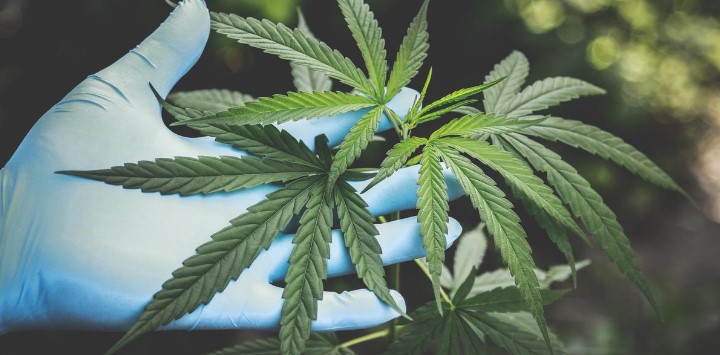
New Potential Challenge: Secondhand Marijuana Smoke
Arkansas voters legalized medical marijuana in 2016. Secondhand marijuana smoke is a health hazard for nonsmokers. Just like secondhand tobacco smoke, marijuana smoke is a potent source of PM 2.5 fine particulate matter. Marijuana secondhand smoke impacts cardiovascular function; it contains thousands of chemicals and at least 33 carcinogens.
COVID Reminds Us That Health Promotion Policies Matter
Smoking and vaping, along with exposure to secondhand smoke and aerosols, negatively impact the respiratory system and may cause a person’s immune system to not function properly, known as being immunocompromised. Research demonstrates that current and former smokers of any age are at higher risk of severe illness from coronavirus disease (COVID) in part due to compromised immune and/or respiratory systems. Smoking leads to cardiovascular disease, as well as respiratory illnesses including bronchitis, asthma, Chronic Obstructive Pulmonary Disease (COPD), and lung cancer as a result of exposure to particulate matter, toxins, and carcinogens into their lungs. Secondhand tobacco and marijuana smoke and aerosol contain many of the same toxins, carcinogens, and particulate matter that lead to respiratory and cardiovascular diseases.
Removing masks to smoke or vape indoors undermines the proven benefit of face coverings and increases the risk of transmitting or inhaling COVID via infectious respiratory droplets, uncovered coughs, and increased touching of faces. Preventing exposure to secondhand smoke and e-cigarette aerosol or vape by adopting a smokefree policy with no smoking or vaping indoors and moving smoking or vaping to socially distanced outdoor areas away from entrances, could help mitigate worker and public exposure to carcinogens and toxins, as well as COVID.
Just as social distancing and handwashing help prevent the spread of disease, eliminating secondhand smoke is critical to prevent acute and chronic diseases, and saves lives by reducing the risk of heart disease, stroke, respiratory diseases, and lung cancer by up to 30% at a population wide level.
Strategies to Close Gaps & Increase Health Equity
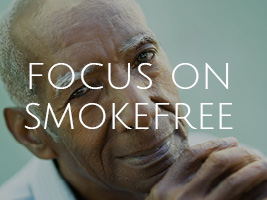
Focus on smokefree policies: Other pressing issues can distract from and delay work on smokefree policies. Smokefree laws have immediate and long-term health and economic benefits, and they are worth the investment of time and effort to protect everyone from exposure to a known human carcinogen. [5]

Let local lead the way: Since Arkansas municipalities have the authority to adopt local laws, communities should focus on passing local laws covering all workplaces, including bars and gambling facilities. Local control and increasing civic engagement is at the heart of our broader goal of educating the public about the health effects caused by secondhand smoke and changing attitudes regarding smoking in ways that harm other people.
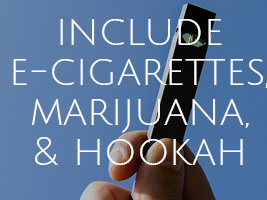
Electronic cigarettes (e-cigarettes), marijuana, and hookah should be included in smokefree laws: Smokefree laws should also prohibit the use of e-cigarettes, marijuana, and hookah to prevent secondhand smoke exposure to the toxins, carcinogens, fine particles, and volatile organic compounds that have been found to compromise respiratory and cardiovascular health. [11,12] Four of the six smokefree cities in Arkansas include restrictions on e-cigarettes.
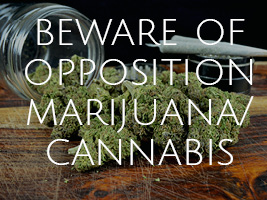
Beware of opposition from cannabis/marijuana proponents: Arkansas voters legalized medical marijuana in 2016, but dispensaries did not open until May 2019. States that legalize medical marijuana typically go on to legalize recreational, adult use marijuana after a few years. Marijuana smoke is also a form of indoor air pollution and a hazard to nonsmokers’ health. In order for indoor workplaces and public spaces to truly be safe and healthy environments, tobacco and marijuana smoke, along with secondhand e-cigarette aerosol/vapor should be prohibited.

Invest in the future by increasing funding and resources: In order to address the gaps in smokefree coverage, a great deal of effort and financial resources will be needed to explain the ongoing disparities in smokefree protections and the benefits of 100% smokefree environments, as well as to counter misinformation about the ability of ventilation systems to protect people from secondhand smoke exposure. Collaborating with and mobilizing additional community-based partners who provide a voice for under-represented individuals and workers being left behind is critical to achieving success. Funds for tobacco prevention, education, training, and cessation resources are needed to better address disparities in smoking and exposure to secondhand smoke. Investing in prevention costs significantly less than the $1.22 billion currently being spent to address annual tobacco use related health care costs in Arkansas. [6]
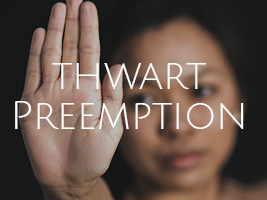
Thwart preemptive efforts: The tobacco industry and its allies regularly push for preemptive legislation in the State Capitol. Preemptive laws typically contain a few very weak provisions and prevent further progress at the local level where stronger laws are more likely to pass.
Sources of data:
- “U.S. Environmental Protection Agency, Respiratory Health Effects of Passive Smoking: Lung Cancer and Other Disorders,” EPA/600/6-90/006F, December 1992.
- American Nonsmokers’ Rights Foundation. (2022). U.S. Tobacco Control Laws Database. Berkeley, CA.
- United Health Foundation. (2021). America’s Health Rankings Annual Report.
- Centers for Disease Control and Prevention. (n.d.). State Highlights: Arkansas [from State Tobacco Activities Tracking and Evaluation System].
- US Department of Health and Human Services. The health consequences of smoking: 50 years of progress. A report of the Surgeon General. Atlanta, GA: US Department of Health and Human Services, CDC; 2014.
- Centers for Disease Control and Prevention. Extinguishing the Tobacco Epidemic in Arkansas, May 2018
- US Department of Health and Human Services. Preventing tobacco use among youth and young adults. A report of the Surgeon General. Atlanta, GA: US Department of Health and Human Services, CDC; 2012.
- Robert Wood Johnson Foundation County Health Rankings (2018). Arkansas State Report.
- Matt, Dr. Georg (2018). Smoking Bans May Not Rid Casinos of Smoke. US News and World Report.
- Matt, G E, Quintana PJ E, Hovell MF et. al. (2004). Households contaminated by environmental tobacco smoke: sources of infant exposures. British Medical Journal: Tobacco Control.
- Grana, R; Benowitz, N; Glantz, S. “Background Paper on E-cigarettes,” Center for Tobacco Control Research and Education, University of California, San Francisco and WHO Collaborating Center on Tobacco Control. December 2013.
- Williams, M.; Villarreal, A.; Bozhilov, K.; Lin, S.; Talbot, P., “Metal and silicate particles including nanoparticles are present in electronic cigarette cartomizer fluid and aerosol,” PLoS ONE 8(3): e57987, March 20, 2013.
Related Reading:
Huang, J., King, B.A., Babb, S.D., Xu, X., Hallett, C., Hopkins, M. (2015). Socio-demographic disparities in local smoke-free law coverage in 10 states. American Journal of Public Health, 105(9), 1806–1813.
Tynan, M.A., Baker Holmes, C., Promoff, G., Hallett, C., Hopkins, M., & Frick, B. (2016). State and local comprehensive smoke-free laws for worksites, restaurants, and bars — United States, 2015. Morbidity and Mortality Weekly Report, 65(24), 623-626.
American Gaming Association. (September 2018). State of the States: The AGA Survey of the Casino Industry.
[n.a.], “Tobacco industry interference with tobacco control,” Geneva: World Health Organization (WHO), 2008.
NCI Monograph 17: Evaluating ASSIST – A Blueprint for Understanding State-level Tobacco Control Evaluation of American Stop Smoking Intervention Study for Cancer Prevention Chapter 8, Evaluating Tobacco Industry Tactics as a Counterforce to ASSIST (October 2006).
July 2022
